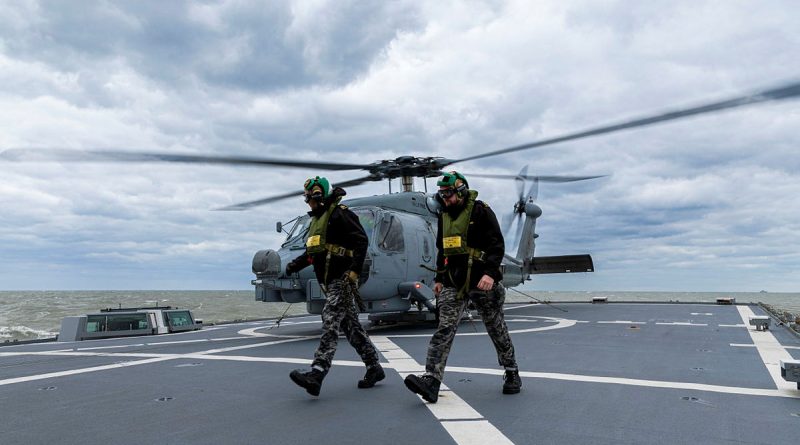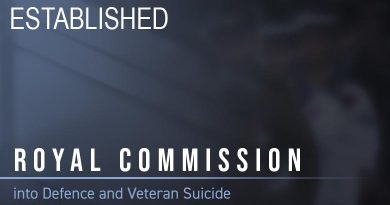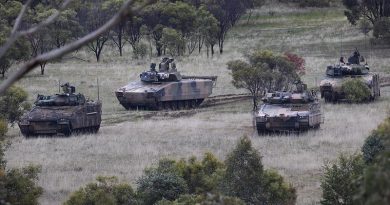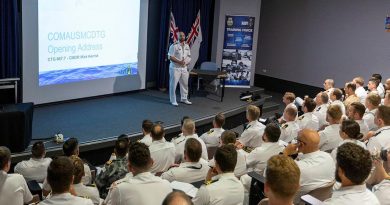Toowoomba supports North Korea sanctions – sailors hurt
Share the post "Toowoomba supports North Korea sanctions – sailors hurt"

The crew of HMAS Toowoomba have supported United Nations Security Council sanctions against North Korea during a regional presence deployment.
CAPTION: Leading Seaman Kalani Brinkmeier and Able Seaman Samuel Speakman on the flight deck of HMAS Toowoomba following flying operation as part of Operation Argos. Photo by Leading Seaman Ernesto Sanchez.
Under Operation Argos, Toowoomba and its embarked MH-60R helicopter, Valkyrie, deployed to monitor and deter illegal ship-to-ship transfers of sanctioned goods in the Indo-Pacific region.
Argos enforces sanctions that support the international community’s goal of the complete, verifiable and irreversible denuclearisation of North Korea, which the ADF supports through the deployment of RAN vessels and RAAF maritime patrol aircraft.
Chief of Joint Operations Lieutenant General Greg Bilton said Australia was committed to enforcing United Nations Security Council sanctions on North Korea until it takes concrete steps towards denuclearisation.
“This operation is Australia’s contribution to a multinational effort, alongside Canada, France, Germany, Japan, New Zealand, Republic of Korea, the United Kingdom and the United States, all of which conduct operations in support of UN Security Council resolutions,” Lieutenant General Bilton said.
“These deployments demonstrate Australia’s commitment to a global rules-based order as part of an international pressure campaign on North Korea to denuclearise.”
Commanding Officer Toowoomba Commander Darin MacDonald said Argos was an important part of the ship’s regional presence deployment.
“We are proud to contribute to the 10th iteration of the RAN’s support to this operation on behalf of Australia,” he said.
“The crew’s hard work is testament to Australia’s continued commitment to regional security and stability.”
On Tuesday 14 November, HMAS Toowoomba was in international waters inside of Japan’s Exclusive Economic Zone enroute to commence a scheduled port visit.
The ship had stopped to conduct diving operations in order to clear fishing nets that had become entangled around its propellers.
At all times, HMAS Toowoomba communicated its intention to conduct diving operations on normal maritime channels, and using internationally recognised signals.
While diving operations were underway a People’s Liberation Army – Navy destroyer (DDG-139) operating in the vicinity closed towards HMAS Toowoomba.
Toowoomba again advised the PLA-N destroyer that diving operations were being conducted and requested the ship keep clear.
Despite acknowledging Toowoomba’s communications, the Chinese vessel approached at a closer range and, soon after, it was detected operating its hull-mounted sonar in a manner that posed a risk to the safety of the Australian divers who were forced to exit the water.
Medical assessments on the divers identified they had sustained minor injuries.
The Australian government expressed “serious concerns” to the Chinese government – but only after Prime Minister Anthony Albanese had met President Xi Jinping at APEC and left San Francisco four days after the incident.
.
.

.
.
Share the post "Toowoomba supports North Korea sanctions – sailors hurt"





